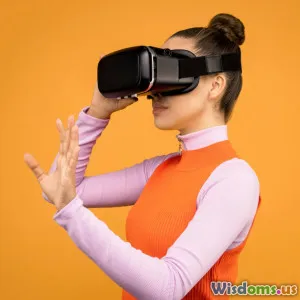
Exploring Virtual Reality in Film
6 min read Discover how virtual reality is transforming the film industry and enhancing storytelling experiences. (0 Reviews)
Exploring Virtual Reality in Film
Virtual reality (VR) is no longer just a futuristic concept; it has become a transformative force in various industries, including film. By immersing audiences in a 360-degree experience, filmmakers can tell stories in ways that traditional media cannot, allowing viewers to feel like they are part of the narrative.
The Evolution of Virtual Reality in Film
The concept of VR dates back several decades, but it wasn’t until recent advancements in technology that it became a viable tool for filmmakers. Early attempts at VR in film were limited by technology, but today’s VR headsets, such as the Oculus Rift, HTC Vive, and PlayStation VR, offer high-definition graphics and responsive environments, bringing stories to life like never before.
Early Experiments
In the early 1990s, projects like "The Lawnmower Man" teased the potential of VR in film, but it wasn't until the 2010s that serious exploration began. Films like "The Invisible Man" and "The Walking Dead: A Telltale Series" showcased how VR could enhance storytelling by allowing viewers to experience narratives from inside the story world.
Mainstream Adoption
As VR technology has advanced, several filmmakers have begun to embrace it. Major studios have invested in VR projects, with films like "The Lion King" and "Ready Player One" incorporating VR elements into their marketing strategies and viewer experiences. The 2017 short film "Pearl" was even nominated for an Academy Award, highlighting the artistic potential of VR in filmmaking.
How VR Enhances Storytelling
Immersive Experience
One of the most significant benefits of VR in film is its ability to create an immersive experience. Viewers can look around the environment, interact with characters, and experience the narrative from different perspectives. This level of engagement can evoke stronger emotional responses, making the story more compelling.
Interactivity
Unlike traditional films, VR allows for interactivity. Viewers can choose how they want to experience the story, which can lead to multiple narrative paths. This interactivity not only engages the audience but also encourages them to explore the story in a more profound way. For instance, in "The Walking Dead: Saints & Sinners," players make choices that affect the storyline and outcomes, adding a layer of depth to the experience.
New Storytelling Techniques
Filmmakers are exploring new techniques that leverage the unique capabilities of VR. For instance, using spatial audio allows sound to move naturally within the 3D environment, enhancing immersion. Some filmmakers are experimenting with non-linear storytelling, where viewers can piece together the narrative in a way that feels personal and unique.
Challenges of VR Filmmaking
Despite its potential, VR also presents challenges. The technology can be expensive, and producing high-quality VR content requires a different skill set compared to traditional filmmaking. Additionally, creating engaging narratives in VR requires careful consideration of pacing and viewer agency without overwhelming them.
Accessibility
While VR technology has become more affordable, it still remains out of reach for some audiences. This disparity raises questions about accessibility in storytelling. Filmmakers must consider how to create experiences that can be enjoyed by a wide audience, including those who may not have access to VR headsets.
The Future of VR in Film
As technology continues to advance, the future of VR in film looks promising. New hardware developments and software innovations will likely lead to more immersive and engaging experiences. The growing interest from filmmakers and audiences alike suggests that VR will play an increasingly important role in the film industry.
Expanding Genres
Currently, VR is predominantly associated with genres like horror and adventure, but the potential for expansion into documentaries, educational films, and even romantic comedies is vast. By leveraging the immersive power of VR, filmmakers can explore new genres and storytelling techniques that were previously unimaginable.
Conclusion
Virtual reality is reshaping the landscape of filmmaking, offering unparalleled opportunities for storytelling and audience engagement. As technology continues to evolve, filmmakers will undoubtedly discover new ways to harness the power of VR, leading to a more interactive and immersive cinematic experience. The future of film is not just about watching stories unfold; it's about stepping into them.
Rate the Post
User Reviews
Popular Posts





















